{"article":{"id":"2221550","title":"Vietnam promotes the development of attracting green credit","description":"The number of foreign organizations providing capital for green credit in Vietnam has increased 2.5 times compared to previous years.","contentObject":"
Mr. Nguyen Thanh Son, Director of the Training Center (Vietnam Banking Association) said that green credit aims at a sustainable financial source in the future. Green credit is an element, a manifestation of sustainable finance towards sustainable development in general.
\nGreen credit is a trend in the global financial industry, aiming for harmonious and balanced development between economy and environment, towards sustainable development.
\nAccording to data from the State Bank, by the end of 2022, outstanding credit for 12 green projects developed and issued by this agency since 2015 reached nearly VND500,000 billion (accounting for about 4.2% of the total outstanding debt of the economy).
\nDuring the 2017-2021 period, green credit outstanding balance grew at an average of more than 25% per year, higher than the average credit growth rate of the economy as a whole.
\nGreen credit loans are mainly focused on green agriculture (accounting for about 46%), sustainable water management (accounting for about 13%), and recently there has been a tendency to shift to other areas such as renewable energy and clean energy.
\nFinastra, a global financial technology company, has just released its annual financial survey. In this report, Vietnamese banks are ranked as the top banks exploring Generative AI, with strong growth in embedded financial models and BaaS banking services. At the same time, the potential for green lending growth is still wide.
\nAccording to Finastra, environmental-social-governance (ESG)-focused finance is expected to benefit both financial institutions and communities, with 91% in Vietnam agreeing that a focus on ESG and sustainability will be the next big thing in finance. This is the highest globally, and 10% higher than the global average (79%).
\nSpecifically, 82% of finance leaders in Vietnam believe that green lending offers growth and revenue generation opportunities. One of the keys to tapping this potential is Generative AI.
\nAmong banks interested in the technology, the most common application of Generative AI in green lending is the collection, processing and analysis of ESG data or the classification of lending criteria (36%). In Vietnam, 44% of banks plan to use Generative AI in green lending. This is the highest rate globally, second only to Saudi Arabia (47%).
\n“Despite challenging economic conditions, investments in AI, BaaS and embedded finance remain a top priority for financial services organisations over the next 12 months, particularly as they look to enhance and personalise the customer experience,” said Simon Paris, CEO at Finastra. “We are strongly committed to ESG initiatives, collaboration around Open Finance and using cutting-edge technologies such as AI to capture the opportunities ahead.”
\nIn addition to its green lending potential, the global fintech firm also assessed that Vietnam is leading the world in the deployment of embedded finance and banking as a service (BaaS). 58% of Vietnamese financial institutions have deployed or improved embedded finance capabilities in the past 12 months, higher than the global average of 41%.
\nBao Anh
","displayType":1,"options":0,"category":{"name":"Finance","detailUrl":"/business/finance","wikiCategoryDetailUrl":"/ho-so/business/finance","relatedIds":["00000G","00000H","00000K","00000J"],"subIds":["000003","00000G","00000H","00000J","00000 K","00000L","00004K"],"fullAvatarUrl":"","fullFacebookShareUrl":""},"displayTypeToInt":1,"detailUrl":"/viet-nam-day-manh-phat-trien-thu-hut-tin-dung-xanh-2221550.html","fullAvatarUrl":"https://static-i mages.vnncdn.net/files/publish/2023/12/1/viet-nam-day-manh-phat-trien-thu-hut-tin-dung-xanh-432.jpg","fullAvatarFbUrl":"https://static-images.vnncdn.net/files/publish/2023/12/1/viet-nam-day-manh-phat-trien-thu-hut-tin-dung-xanh-433.jpg","updatedDate":"2023-12-01T10:50:15","isHiddenDescription":"","publishDateDisplay":"01/12/2023","hasCover":false},"articlesSameCategory":[{"id":"2221503","title":"Interest Bank interest rates 12/1/2023: More banks reduce, 'special interest rates' decrease accordingly","description":"Bank interest rates on December 1 recorded more banks adjusting. The "special interest rate" also decreased by 0.2%/year compared to yesterday.","displayType":1,"category":{"name":"Financial main","detailUrl":"/kinh-doanh/tai-chinh","wikiCategoryDetailUrl":"/ho-so/kinh-doanh/tai-chinh","relatedIds":["00000G","00000H","00000K","00000J"],"subIds":["000003","00000G","00000H","00000J","00000K","00000L","00004K"],"fullAvatarUrl":"","fullFacebookShareUrl":""},"displayTypeToInt":1,"detailUrl":"https://vietnamnet.vn/lai-suat-ngan-hang-1-12-2023-them-nha-bang-giam-lai-su at-dac-biet-ha-theo-2221503.html","fullAvatarUrl":"https://static-images.vnncdn.net/files/publish/2023/12/1/lai-suat-ngan-hang-1122023-them-nha-bang-giam-lai-suat-dac-biet-ha-theo-369.jpeg" ,"isFee":false,"priority":0,"zoneId":"","publishDate":"2023-12-01T10:21:00","option":0,"avatar IconPosition":0,"updatedDate":"0001-01-01T00:00:00","isPin":false},{"id":"2221247","title":"Price Gold today December 1, 2023: Still a safe haven, gold prices remain high","description":"Gold prices today December 1, 2023 on the international market remain high, above 2,000 USD/ounce after the US announced that inflation in October decreased slightly compared to September.","displayType":1,"category":{"name":"Financial main","detailUrl":"/kinh-doanh/tai-chinh","wikiCategoryDetailUrl":"/ho-so/kinh-doanh/tai-chinh","relatedIds":["00000G","00000H","00000K","00000J"],"subIds":["000003","00000G","00000H","00000J","00000K","00000L","00004K"],"fullAvatarUrl":"","fullFacebookShareUrl":""},"displayTypeToInt":1,"detailUrl":"https://vietnamnet.vn/gia-vang-hom-nay-1-12-2023-vang-sjc-van-n eo-o-muc-cao-2221247.html","fullAvatarUrl":"https://static-images.vnncdn.net/files/publish/2023/11/30/gia-vang-hom-nay-1122023-lam-phat-my-giam-gia-vang-giu-o-muc-cao-1537.jpeg","isF ee":false,"priority":0,"zoneId":"","publishDate":"2023-12-01T09:13:00","option":0,"avatarIc onPosition":0,"updatedDate":"0001-01-01T00:00:00","isPin":false},{"id":"2221122","title":"27 Localities reduce re-borrowing by 5,565 billion, Hanoi City is reminded to learn from experience","description":" The Ministry of Finance has just issued a document reporting to the Government leaders on the cause of the situation where many localities have proposed adjusting the re-borrowing budget for 2023.","displayType":1,"category":{"name":"Finance main","detailUrl":"/kinh-doanh/tai-chinh","wikiCategoryDetailUrl":"/ho-so/kinh-doanh/tai-chinh","relatedIds":["00000G","00000H","00000K","00000J"],"subIds":["000003","00000G","00000H","00000J","00000K","00000L","00004K"],"fullAvatarUrl":"","fullFacebookShareUrl":""},"displayTypeToInt":1,"detailUrl":"https://vietnamnet.vn/27-dia-phuong-giam-vay-lai-5-565-ty-tp-ha-noi-bi-n hac-rut-kinh-nghiem-2221122.html","fullAvatarUrl":"https://static-images.vnncdn.net/files/publish/2023/11/30/27-dia-phuong-giam-vay-lai-5565-ty-tp-ha-noi-bi-nhac-rut-kinh-nghiem-1420.jpg","isFee":false,"priority":0,"zoneId":"","publishDate":"2023-12-01T07:03:00","option":0,"avatarIconPosition":0,"updatedDate":"0001-01-01T00:00:00","isPin":false},{"id":"2221389","title":"Bi "misunderstanding" related to Van Thinh Phat, Debt Trading Company speaks up","description":"Vietnam Debt Trading Company Limited (DATC) affirms that since November 2014, DCSC Company has operated independently, has no binding relationship and is no longer a member unit of DATC.","displayType":1,"category":{"name":"Resource main","detailUrl":"/kinh-doanh/tai-chinh","wikiCategoryDetailUrl":"/ho-so/kinh-doanh/tai-chinh","relatedIds":["00000G","00000H","00000K","00000J"],"subIds":["000003","00000G","00000H","00000J","00000K","00000L","00004K"],"fullAvatarUrl":"","fullFacebookShareUrl":""},"displayTypeToInt":1,"detailUrl":"https://vietnamnet.vn/cong-ty-mua-ban-no-len-tieng-ve-viec-lien-qu an-van-thinh-phat-2221389.html","fullAvatarUrl":"https://static-images.vnncdn.net/files/publish/2023/12/1/bi-hieu-lam-lien-quan-van-thinh-phat-cong-ty-mua-ban-no-len-tieng-140.jpg","is Fee":false,"priority":0,"zoneId":"","publishDate":"2023-12-01T06:49:58","option":0,"avatarIc onPosition":0,"updatedDate":"0001-01-01T00:00:00","isPin":false},{"id":"2221367","title":"Version Financial news on the morning of December 1, 2023: Gold prices remain high, oil and USD rise","description":"Gold prices today, December 1, 2023, on the world market remain high. World oil prices tend to rise due to concerns about tight supply. USD prices continue to rise.","displayType":1,"category":{"name":"Financial main","detailUrl":"/kinh-doanh/tai-chinh","wikiCategoryDetailUrl":"/ho-so/kinh-doanh/tai-chinh","relatedIds":["00000G","00000H","00000K","00000J"],"subIds":["000003","00000G","00000H","00000J","00000K","00000L","00004K"],"fullAvatarUrl":"","fullFacebookShareUrl":""},"displayTypeToInt":1,"detailUrl":"https://vietnamnet.vn/ban-tin-tai-chinh-sang-1-12-2023-gia-vang-o-muc-ca o-dau-va-usd-di-len-2221367.html","fullAvatarUrl":"https://static-images.vnncdn.net/files/pub lish/2023/11/30/ban-tin-tai-chinh-sang-1122023-gia-vang-o-muc-cao-dau-va-usd-di-len-1564.jpg", "isFee":false,"priority":0,"zoneId":"","publishDate":"2023-12-01T06:22:00","option":0,"avatarI conPosition":0,"updatedDate":"0001-01-01T00:00:00","isPin":false},{"id":"2221253","title":"Cancel "Listing of shares of 'Louis family' Mr. Do Thanh Nhan used to inflate the price","description":"Ho Chi Minh City Stock Exchange (HoSE) has just announced the mandatory delisting of The Golden Group Joint Stock Company (TGG), which was once related to Mr. Do Thanh Nhan.","displayType":1,"category":{"name":"Resource main","detailUrl":"/kinh-doanh/tai-chinh","wikiCategoryDetailUrl":"/ho-so/kinh-doanh/tai-chinh","relatedIds":["00000G","00000H","00000K","00000J"],"subIds":["000003","00000G","00000H","00000J","00000K","00000L","00004K"],"fullAvatarUrl":"","fullFacebookShareUrl":""},"displayTypeToInt":1,"detailUrl":"https://vietnamnet.vn/huy-niem-yet-co-phieu-ho-louis-ong-do-thanh-n han-tung-thoi-gia-2221253.html","fullAvatarUrl":"https://static-images.vnncdn.net/files/publish/2023/11/30/huy-niem-yet-co-phieu-ho-louis-ong-do-thanh-nhan-tung-thoi-gia-1522.webp","is Fee":false,"priority":0,"zoneId":"","publishDate":"2023-12-01T05:46:00","option":0,"avatarIc onPosition":0,"updatedDate":"0001-01-01T00:00:00","isPin":false},{"id":"2221322","title":"Master LDG Chairman Nguyen Khanh Hung, who was recently arrested for illegally building 500 villas, is a familiar but infamous name on the stock market. ","displayType":1,"category":{"name":"Financial main","detailUrl":"/kinh-doanh/tai-chinh","wikiCategoryDetailUrl":"/ho-so/kinh-doanh/tai-chinh","relatedIds":["00000G","00000H","00000K","00000J"],"subIds":["000003","00000G","00000H","00000J","00000K","00000L","00004K"],"fullAvatarUrl":"","fullFacebookShareUrl":""},"displayTypeToInt":1,"detailUrl":"https://vietnamnet.vn/chu-tich-ldg-xay-500-biet-thu-vua-bi-bat-tai-tieng-ban-chui-lien -tuc-bi-ban-giai-chap-2221322.html","fullAvatarUrl":"https://static-images.vnncdn.net/files/publish/2023/11/30/chu-tich-bi-bat-vu-500-biet-thu-sai-phep-nhieu-tai-tieng-trong-gioi-chung-khoan-1575.jpg","isFee":false,"priority":0,"zoneId":"","publishDate":"2023-11-30T23:17:00","option":0,"avatarIconPosition":0,"updatedDate":"0001-01-01T00:00:00","isPin":false},{"id":"2220884","title":"Price Gold today November 30, 2023: After increasing and decreasing, SJC gold is still close to 74 million/tael","description":"Gold price today November 30 in the world increased again, close to the record high. In the afternoon, domestic gold price decreased by 300,000 VND/tael after increasing by that amount at 11:00 am, up to nearly 74 million VND/tael.","displayType":1,"category":{"name":"Account main","detailUrl":"/kinh-doanh/tai-chinh","wikiCategoryDetailUrl":"/ho-so/kinh-doanh/tai-chinh","relatedIds":["00000G","00000H","00000K","00000J"],"subIds":["000003","00000G","00000H","00000J","00000K","00000L","00004K"],"fullAvatarUrl":"","fullFacebookShareUrl":""},"displayTypeToInt":1,"detailUrl":"https://vietnamnet.vn/gia-vang-hom-nay-30-11-2023-vang-sjc-tien-sat-74 -trieu-luong-2220884.html","fullAvatarUrl":"https://static-images.vnncdn.net/files/publish/2023/11/29/gia-vang-hom-nay-30112023-ngay-sat-dinh-lich-su-cho-ky-luc-cao-moi-1415.jpg","isFee" :false,"priority":0,"zoneId":"","publishDate":"2023-11-30T15:19:00","option":0,"avatarIconPos ition":0,"updatedDate":"0001-01-01T00:00:00","isPin":false},{"id":"2221171","title":"PVcomBank and Petrovietnam successfully cooperated to connect Open Banking service","description":"The connection service between the ERP system of Petrovietnam Group and the Open Banking system of PVcomBank has come into operation.","displayType":1,"category":{"name":"Resource main","detailUrl":"/business/finance","wikiCategoryDetailUrl":"/ho-so/business/finance","relatedIds":["00000G","00000H","00000K","00000J"],"subIds":["000003","00000G","00000H","00000J","00000K","00000L","00004K"],"fullAvatarUrl":"","fullFacebookShareUrl":""},"displayTypeToInt":1,"detailUrl":"https://vietnamnet.vn/pvcombank-va-petrovietnam-ket-noi-thanh-cong-dich-v u-ngan-hang-mo-2221171.html","fullAvatarUrl":"https://static-images.vnncdn.net/files/publish/2023/11/30/pvcombank-va-petrovietnam-hop-tac-ket-noi-thanh-cong-dich-vu-ngan-hang-mo-857.jpg"," isFee":false,"priority":0,"zoneId":"","publishDate":"2023-11-30T15:00:00","option":4,"avatarIc onPosition":0,"updatedDate":"0001-01-01T00:00:00","isPin":false},{"id":"2221111","title":"Bank State Bank adjusts credit growth targets among banks","description":"The State Bank has proactively adjusted credit growth targets across the system from credit institutions (CIs) that are not fully utilized to CIs that need to continue expanding credit growth.","displayType":1,"category":{"name":"Financial main","detailUrl":"/kinh-doanh/tai-chinh","wikiCategoryDetailUrl":"/ho-so/kinh-doanh/tai-chinh","relatedIds":["00000G","00000H","00000K","00000J"],"subIds":["000003","00000G","00000H","00000J","00000K","00000L","00004K"],"fullAvatarUrl":"","fullFacebookShareUrl":""},"displayTypeToInt":1,"detailUrl":"https://vietnamnet.vn/ngan-hang-nha-nuoc-dieu-chinh-chi-tieu-tang-truong-tin-dung -giua-cac-ngan-hang-2221111.html","fullAvatarUrl":"https://static-images.vnncdn.net/files/publish/2023/11/30/ngan-hang-nha-nuoc-dieu-chinh-chi-tieu-tang-truong-tin-dung-giua-cac-ngan-hang-724. jpg","isFee":false,"priority":0,"zoneId":"","publishDate":"2023-11-30T12:18:00","option":0,"avat arIconPosition":0,"updatedDate":"0001-01-01T00:00:00","isPin":false},{"id":"2221079","title":"Open HDBank account, hunt for the opportunity to receive a refund with double incentives","description":"From now until December 16, 2023, when opening a new account on the HDBank app, customers will have the opportunity to receive a refund of 50 thousand - 5 million VND.","displayType":1,"category":{"name":"Account main","detailUrl":"/kinh-doanh/tai-chinh","wikiCategoryDetailUrl":"/ho-so/kinh-doanh/tai-chinh","relatedIds":["00000G","00000H","00000K","00000J"],"subIds":["000003","00000G","00000H","00000J","00000K","00000L","00004K"],"fullAvatarUrl":"","fullFacebookShareUrl":""},"displayTypeToInt":1,"detailUrl":"https://vietnamnet.vn/mo-tai-khoan-hdbank-san-co-hoi-nhan-hoan-tien- 5-trieu-and-uu-dai-kep-2221079.html","fullAvatarUrl":"https://static-images.vnncdn.net/files/publish/2023/11/30/mo-tai-khoan-hdbank-san-co-hoi-nhan-hoan-tien-cung-uu-dai-kep-629.jpg","is Fee":false,"priority":0,"zoneId":"","publishDate":"2023-11-30T11:30:00","option":4,"avatarIc onPosition":0,"updatedDate":"0001-01-01T00:00:00","isPin":false},{"id":"2221011","title":"Profit Bank interest rates November 30, 2023: The 'big guys' paying the lowest interest rates continue to decrease","description":"Bank interest rates today, November 30, 2023, witnessed a series of 'big guys' banks adjusting their deposit interest rates down. The lowest term deposit interest rate on the market is currently only 2.4%/year.","displayType":1,"category":{"name":"Financial main","detailUrl":"/kinh-doanh/tai-chinh","wikiCategoryDetailUrl":"/ho-so/kinh-doanh/tai-chinh","relatedIds":["00000G","00000H","00000K","00000J"],"subIds":["000003","00000G","00000H","00000J","00000K","00000L","00004K"],"fullAvatarUrl":"","fullFacebookShareUrl":""},"displayTypeToInt":1,"detailUrl":"https://vietnamnet.vn/lai-suat-ngan-hang-30-11-2023-ong-lon-tra-lai-thap-nhat -van-tiep-tuc-giam-2221011.html","fullAvatarUrl":"https://static-images.vnncdn.net/files/publish/2023/11/30/lai-suat-ngan-hang-30112023-ong-lon-tra-lai-thap-nhat-van-tiep-tuc-giam-473.jpg", "isFee":false,"priority":0,"zoneId":"","publishDate":"2023-11-30T10:04:00","option":0,"avatarIc onPosition":0,"updatedDate":"0001-01-01T00:00:00","isPin":false},{"id":"2220720","title":"No Not only SCB, many other weak banks have also "showed off" many awards before being put under special control.","displayType":1,"category":{"name":"Resources main","detailUrl":"/kinh-doanh/tai-chinh","wikiCategoryDetailUrl":"/ho-so/kinh-doanh/tai-chinh","relatedIds":["00000G","00000H","00000K","00000J"],"subIds":["000003","00000G","00000H","00000J","00000K","00000L","00004K"],"fullAvatarUrl":"","fullFacebookShareUrl":""},"displayTypeToInt":1,"detailUrl":"https://vietnamnet.vn/khong-chi-scb-nhieu-ngan-hang-yeu-kem-sai-pham-tung-n han-mua-giai-thuong-2220720.html","fullAvatarUrl":"https://static-images.vnncdn.net/files/publish/2023/11/30/khong-chi-scb-nhieu-ngan-hang-yeu-kem-sai-pham-tung-nhan-mua-giai-thuong-342.jpg","isFee":false,"priority":0,"zoneId":"","publishDate":"2023-11-30T09:13:25","option":0,"avatarIconPosition":0,"updatedDate":"0001-01-01T00:00:00","isPin":false},{"id":"2220831","title":"System BIDV Open API ecosystem - Shaping the future of financial services","description":"On November 29, BIDV Bank launched an open ecosystem, helping to integrate banking services into customers' applications, software, and digital platforms, thereby providing superior financial solutions and seamless service experiences in the digital space.","displayType":1,"category":{"name":"Financial main","detailUrl":"/kinh-doanh/tai-chinh","wikiCategoryDetailUrl":"/ho-so/kinh-doanh/tai-chinh","relatedIds":["00000G","00000H","00000K","00000J"],"subIds":["000003","00000G","00000H","00000J","00000K","00000L","00004K"],"fullAvatarUrl":"","fullFacebookShareUrl":""},"displayTypeToInt":1,"detailUrl":"https://vietnamnet.vn/he-sinh-thai-mo-bidv-open-api-dinh-hinh-dich-vu-t ai-chinh-tuong-lai-2220831.html","fullAvatarUrl":"https://static-images.vnncdn.net/files/publish/2023/11/29/he-sinh-thai-mo-bidv-open-api-dinh-hinh-dich-vu-tai-chinh-tuong-lai-1279.jpg"," isFee":false,"priority":0,"zoneId":"","publishDate":"2023-11-30T09:00:00","option":4,"avatarI conPosition":0,"updatedDate":"0001-01-01T00:00:00","isPin":false},{"id":"2220936","title":"Just "After canceling the old list, Hoang Anh Gia Lai Group suddenly re-announced the list of new investors who want to buy 130 million shares. Accordingly, ThaiGroup Corporation replaced Viet Cat Fund Management Joint Stock Company.","displayType":1,"category":{"name":"Resources main","detailUrl":"/kinh-doanh/tai-chinh","wikiCategoryDetailUrl":"/ho-so/kinh-doanh/tai-chinh","relatedIds":["00000G","00000H","00000K","00000J"],"subIds":["000003","00000G","00000H","00000J","00000K","00000L","00004K"],"fullAvatarUrl":"","fullFacebookShareUrl":""},"displayTypeToInt":1,"detailUrl":"https://vietnamnet.vn/vua-huy-danh-sach-cu-hoang-anh-gia-lai-xuat-h ien-nha-dau-tu-moi-2220936.html","fullAvatarUrl":"https://static-images.vnncdn.net/files/publish/2023/11/30/vua-huy-danh-sach-cu-hoang-anh-gia-lai-xuat-hien-nha-dau-tu-moi-231.jpeg","isFee":false,"priority":0,"zoneId":"","publishDate":"2023-11-30T07:52:00","option":0,"avatarIconPosition":0,"updatedDate":"0001-01-01T00:00:00","isPin":false},{"id":"2218970","title":"Fake "Forging bank seals and signatures to commit fraud","description":"Banks constantly update and issue warnings to customers about new forms of fraud, including cases of forging both seals and signatures of leaders.","displayType":1,"category":{"name":"Account main","detailUrl":"/kinh-doanh/tai-chinh","wikiCategoryDetailUrl":"/ho-so/kinh-doanh/tai-chinh","relatedIds":["00000G","00000H","00000K","00000J"],"subIds":["000003","00000G","00000H","00000J","00000K","00000L","00004K"],"fullAvatarUrl":"","fullFacebookShareUrl":""},"displayTypeToInt":1,"detailUrl":"https://vietnamnet.vn/gia-mao-con-dau-va-chu-ky-lanh-dao-ng an-hang-de-lua-dao-2218970.html","fullAvatarUrl":"https://static-images.vnncdn.net/files/publish/2023/11/29/gia-mao-con-dau-va-chu-ky-lanh-dao-ngan-hang-de-lua-dao-864.jpeg","isFee" :false,"priority":0,"zoneId":"","publishDate":"2023-11-30T06:21:00","option":0,"avatarIcon Position":0,"updatedDate":"0001-01-01T00:00:00","isPin":false},{"id":"2220900","title":"Version Financial news on the morning of November 30, 2023: Gold prices cool down, oil increases, USD recovers","description":"Gold prices today, November 30, 2023, on the world market decreased slightly but are still close to the record high. World oil prices are going up, while domestic oil prices are forecast to increase and decrease in opposite directions. International USD prices tend to recover.","displayType":1,"category":{"name":"Financial main","detailUrl":"/kinh-doanh/tai-chinh","wikiCategoryDetailUrl":"/ho-so/kinh-doanh/tai-chinh","relatedIds":["00000G","00000H","00000K","00000J"],"subIds":["000003","00000G","00000H","00000J","00000K","00000L","00004K"],"fullAvatarUrl":"","fullFacebookShareUrl":""},"displayTypeToInt":1,"detailUrl":"https://vietnamnet.vn/ban-tin-tai-chinh-sang-30-11-2023-gia-vang-ha-nhiet-dau -tang-usd-hoi-phuc-2220900.html","fullAvatarUrl":"https://static-images.vnncdn.net/files/publi sh/2023/11/29/ban-tin-tai-chinh-sang-30112023-gia-vang-ha-nhiet-dau-tang-usd-hoi-phuc-1464.jpg" ,"isFee":false,"priority":0,"zoneId":"","publishDate":"2023-11-30T06:18:00","option":0,"avatarI conPosition":0,"updatedDate":"0001-01-01T00:00:00","isPin":false},{"id":"2220667","title":"Bank "The bank attracted an additional 33 billion USD, the real estate giants turned to pay off every single debt","description":"Many real estate giants are still having difficulties, having to delay or postpone debt payments, even having all their money deducted. Meanwhile, banks have plenty of cash because people and organizations are still pouring money into the banking system.","displayType":1,"category":{"name":"Financial main","detailUrl":"/kinh-doanh/tai-chinh","wikiCategoryDetailUrl":"/ho-so/kinh-doanh/tai-chinh","relatedIds":["00000G","00000H","00000K","00000J"],"subIds":["000003","00000G","00000H","00000J","00000K","00000L","00004K"],"fullAvatarUrl":"","fullFacebookShareUrl":""},"displayTypeToInt":1,"detailUrl":"https://vietnamnet.vn/ngan-hang-hut-them-33-ty-usd-ong-lon-bat-dong-san-xoa y-tra-no-tung-dong-2220667.html","fullAvatarUrl":"https://static-images.vnncdn.net/files/publish/2023/11/29/ngan-hang-hut-them-33-ty-usd-ong-lon-bat-dong-san-xoay-tra-no-tung-dong-1502.gif ","isFee":false,"priority":0,"zoneId":"","publishDate":"2023-11-30T06:15:00","option":0,"avata rIconPosition":0,"updatedDate":"0001-01-01T00:00:00","isPin":false},{"id":"2220779","title":"Ly "Because it is forecasted that the domestic gold price may increase to 77 million VND/tael","description":"According to the Vice President of the Vietnam Gold Business Association, if the world gold price reaches 2,100 USD/ounce, the domestic gold price may increase to 76-77 million VND/tael.","displayType":1,"category":{"name":"According to the Vice President of the Vietnam Gold Trading Association, if the world gold price reaches 2,100 USD/ounce, the domestic gold price may increase to 76-77 million VND/tael.","displayType":1,"category":{"name":"Account main","detailUrl":"/kinh-doanh/tai-chinh","wikiCategoryDetailUrl":"/ho-so/kinh-doanh/tai-chinh","relatedIds":["00000G","00000H","00000K","00000J"],"subIds":["000003","00000G","00000H","00000J","00000K","00000L","00004K"],"fullAvatarUrl":"","fullFacebookShareUrl":""},"displayTypeToInt":1,"detailUrl":"https://vietnamnet.vn/ly-do-du-bao-gia-vang-trong-nuoc-co-the-tang-len-77-tri eu-dong-luong-2220779.html","fullAvatarUrl":"https://static-images.vnncdn.net/files/publish/2023/11/29/ly-do-when-chuyen-gia-du-bao-vang-trong-nuoc-co-the-len-77-million-dongluong-1452.jpg", "isFee":false,"priority":0,"zoneId":"","publishDate":"2023-11-30T06:11:00","option":0,"avatarIc onPosition":0,"updatedDate":"0001-01-01T00:00:00","isPin":false},{"id":"2220785","title":"Business Mr. Ho Xuan Nang's company pays 'huge' dividends","description":"Although net profit in the first 9 months of the year decreased by 35%, Mr. Ho Xuan Nang's company still paid "huge" dividends of up to 40% in 2023, equivalent to 640 billion VND.","displayType":1,"category":{"name":"Financial main","detailUrl":"/kinh-doanh/tai-chinh","wikiCategoryDetailUrl":"/ho-so/kinh-doanh/tai-chinh","relatedIds":["00000G","00000H","00000K","00000J"],"subIds":["000003","00000G","00000H","00000J","00000K","00000L","00004K"],"fullAvatarUrl":"","fullFacebookShareUrl":""},"displayTypeToInt":1,"detailUrl":"https://vietnamnet.vn/doanh-nghiep-cua-ong-ho-xuan-nang -tra-co-tuc-khung-2220785.html","fullAvatarUrl":"https://static-images.vnncdn.net/files/publish/2023/11/29/doanh-nghiep-cua-ong-ho-xuan-nang-tra-co-tuc-khung-1456.gif","isFee":fal se,"priority":0,"zoneId":"","publishDate":"2023-11-30T05:44:00","option":0,"avatarIconPos ition":0,"updatedDate":"0001-01-01T00:00:00","isPin":false},{"id":"2220898","title":"Business "Mr. Doan Nguyen Duc's (Mr. Duc's) Hoang Anh Gia Lai collects 200 billion VND from HAGL Agrico of billionaire Tran Ba Duong and pays part of the principal of BIDV Bank's bond lot.","displayType":1,"category":{"name":"Resources": main","detailUrl":"/kinh-doanh/tai-chinh","wikiCategoryDetailUrl":"/ho-so/kinh-doanh/tai-chinh","relatedIds":["00000G","00000H","00000K","00000J"],"subIds":["000003","00000G","00000H","00000J","00000K","00000L","00004K"],"fullAvatarUrl":"","fullFacebookShareUrl":""},"displayTypeToInt":1,"detailUrl":"https://vietnamnet.vn/doanh-nghiep-cua-bau-duc-co-200-ty-dong-tra -no-goc-trai-phieu-2220898.html","fullAvatarUrl":"https://static-images.vnncdn.net/files/publish/2023/11/29/doanh-nghiep-cua-bau-duc-co-200-ty-dong-tra-no-goc-trai-phieu-1461.jpg","isF ee":false,"priority":0,"zoneId":"","publishDate":"2023-11-29T21:49:04","option":0,"avatarIco nPosition":0,"updatedDate":"0001-01-01T00:00:00","isPin":false},{"id":"2220809","title":"Price Gold bars fell rapidly after reaching a historic peak, falling below the 74 million/tael mark","description":"The domestic gold bar price today fluctuated violently when it suddenly increased by a million VND/tael, setting a new peak of 74.6 million VND/tael (sold) but then turned around and fell sharply, falling below the 74 million VND/tael mark.","displayType":1,"category":{"name":"Tai main","detailUrl":"/kinh-doanh/tai-chinh","wikiCategoryDetailUrl":"/ho-so/kinh-doanh/tai-chinh","relatedIds":["00000G","00000H","00000K","00000J"],"subIds":["000003","00000G","00000H","00000J","00000K","00000L","00004K"],"fullAvatarUrl":"","fullFacebookShareUrl":""},"displayTypeToInt":1,"detailUrl":"https://vietnamnet.vn/gia-vang-mieng-giam-nhanh-sau-khi-len-dinh-lich-su-tuot- moc-74-trieu-luong-2220809.html","fullAvatarUrl":"https://static-images.vnncdn.net/files/publish/2023/11/29/gia-vang-mieng-giam-nhanh-sau-khi-len-dinh-lich-su-tuot-moc-74-trieuluong-1185.jpg ","isFee":false,"priority":0,"zoneId":"","publishDate":"2023-11-29T17:53:00","option":0,"avatar IconPosition":0,"updatedDate":"0001-01-01T00:00:00","isPin":false},{"id":"2220781","title":"BIG Awards for Business 2023: Viettel Money receives the 'Product of the Year' award","description":"With more than 300 features and utilities personalized to each customer, Viettel Money has met people's digital financial needs, excellently winning the "Product of the Year" award at the BIG Awards for Business 2023.","displayType":1,"category":{"name":"Product of the Year" main","detailUrl":"/business/finance","wikiCategoryDetailUrl":"/ho-so/business/finance","relatedIds":["00000G","00000H","00000K","00000J"],"subIds":["000003","00000G","00000H","00000J","00000K","00000L","00004K"],"fullAvatarUrl":"","fullFacebookShareUrl":""},"displayTypeToInt":1,"detailUrl":"https://vietnamnet.vn/big-awards-for-business-2023-viettel-money-nhan-gia i-san-pham-cua-nam-2220781.html","fullAvatarUrl":"https://static-images.vnncdn.net/files/publish/2023/11/29/big-awards-for-business-2023-viettel-money-nhan-giai-san-pham-cua-nam-1085.jpg", "isFee":false,"priority":0,"zoneId":"","publishDate":"2023-11-29T17:00:00","option":4,"avatarI conPosition":0,"updatedDate":"0001-01-01T00:00:00","isPin":false},{"id":"2220451","title":"Price Gold today, November 29, 2023, turned down, still over 74 million VND/tael","description":"Gold price today, November 29, 2023, in the world increased vertically, causing domestic gold price to increase sharply by 700,000 VND/tael (buy), 900,000 VND/tael (sell). By the afternoon, gold decreased by 300,000 VND/tael in both directions but was still over 74 million VND/tael.","displayType":1,"category":{"name":"Account main","detailUrl":"/kinh-doanh/tai-chinh","wikiCategoryDetailUrl":"/ho-so/kinh-doanh/tai-chinh","relatedIds":["00000G","00000H","00000K","00000J"],"subIds":["000003","00000G","00000H","00000J","00000K","00000L","00004K"],"fullAvatarUrl":"","fullFacebookShareUrl":""},"displayTypeToInt":1,"detailUrl":"https://vietnamnet.vn/gia-vang-hom-nay-29-11-2023-quay-dau-giam-vang-sj c-van-tren-74-trieu-dong-2220451.html","fullAvatarUrl":"https://static-images.vnncdn.net/files/publish/2023/11/28/gia-vang-hom-nay-29112023-tang-khong-ngung-sap-lap-ky-luc-moi-1374.jpg"," isFee":false,"priority":0,"zoneId":"","publishDate":"2023-11-29T14:07:00","option":0,"avatarI conPosition":0,"updatedDate":"0001-01-01T00:00:00","isPin":false},{"id":"2220594","title":"Price Gold price skyrockets to historic peak, 90 million VND/tael is not far away?","description":"Domestic gold price increases sharply and continuously sets new peaks. World gold price also continuously increases and new record high is very close. Many people receive clearer signals from the US, while the USD is rapidly falling.","displayType":1,"category":{"name":"Account main","detailUrl":"/kinh-doanh/tai-chinh","wikiCategoryDetailUrl":"/ho-so/kinh-doanh/tai-chinh","relatedIds":["00000G","00000H","00000K","00000J"],"subIds":["000003","00000G","00000H","00000J","00000K","00000L","00004K"],"fullAvatarUrl":"","fullFacebookShareUrl":""},"displayTypeToInt":1,"detailUrl":"https://vietnamnet.vn/gia-vang-vot-len-dinh-lich-su-muc-90-trieu-dong-luong-kh ong-con-xa-2220594.html","fullAvatarUrl":"https://static-images.vnncdn.net/files/publish/2023/11/29/gia-vang-vot-len-dinh-lich-su-muc-90-trieu-dongluong-khong-con-xa-642.jpg","isFee":false," priority":0,"zoneId":"","publishDate":"2023-11-29T11:35:00","option":0,"avatarIconPosition":0,"updatedDate":"0001-01-01T00:00:00","isPin":false}],"pageIndex":0,"totalPage":0,"articlePage":0}The number of foreign organizations providing green credit in Vietnam has increased 2.5 times compared to previous years.
Mr. Nguyen Thanh Son, Director of the Training Center (Vietnam Banking Association) said that green credit aims at a sustainable financial source in the future. Green credit is an element, a manifestation of sustainable finance towards sustainable development in general.
Green credit is a trend in the global financial industry, aiming for harmonious and balanced development between economy and environment, towards sustainable development.
According to data from the State Bank, by the end of 2022, outstanding credit for 12 green projects developed and issued by this agency since 2015 reached nearly VND500,000 billion (accounting for about 4.2% of the total outstanding debt of the economy).
During the 2017-2021 period, green credit outstanding balance grew at an average of more than 25% per year, higher than the average credit growth rate of the economy as a whole.
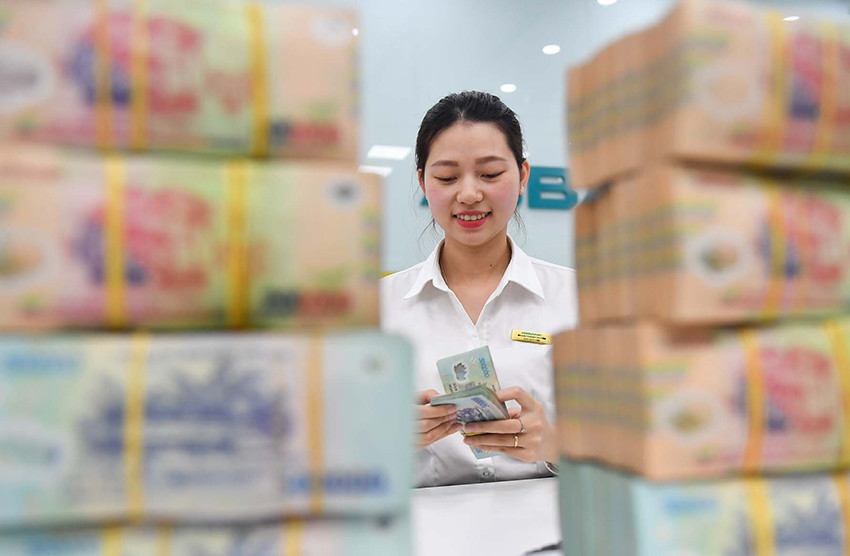
Green credit loans are mainly focused on green agriculture (accounting for about 46%), sustainable water management (accounting for about 13%), and recently there has been a tendency to shift to other areas such as renewable energy and clean energy.
Finastra, a global financial technology company, has just released its annual financial survey. In this report, Vietnamese banks are ranked as the top banks exploring Generative AI, with strong growth in embedded financial models and BaaS banking services. At the same time, the potential for green lending growth is still wide.
According to Finastra, environmental-social-governance (ESG)-focused finance is expected to benefit both financial institutions and communities, with 91% in Vietnam agreeing that a focus on ESG and sustainability will be the next big thing in finance. This is the highest globally, and 10% higher than the global average (79%).
Specifically, 82% of finance leaders in Vietnam believe that green lending offers growth and revenue generation opportunities. One of the keys to tapping this potential is Generative AI.
Among banks interested in the technology, the most common application of Generative AI in green lending is the collection, processing and analysis of ESG data or the classification of lending criteria (36%). In Vietnam, 44% of banks plan to use Generative AI in green lending. This is the highest rate globally, second only to Saudi Arabia (47%).
“Despite challenging economic conditions, investments in AI, BaaS and embedded finance remain a top priority for financial services organisations over the next 12 months, particularly as they look to enhance and personalise the customer experience,” said Simon Paris, CEO at Finastra. “We are strongly committed to ESG initiatives, collaboration around Open Finance and using cutting-edge technologies such as AI to capture the opportunities ahead.”
In addition to its green lending potential, the global fintech firm also assessed that Vietnam is leading the world in the deployment of embedded finance and banking as a service (BaaS). 58% of Vietnamese financial institutions have deployed or improved embedded finance capabilities in the past 12 months, higher than the global average of 41%.
Bao Anh
Source





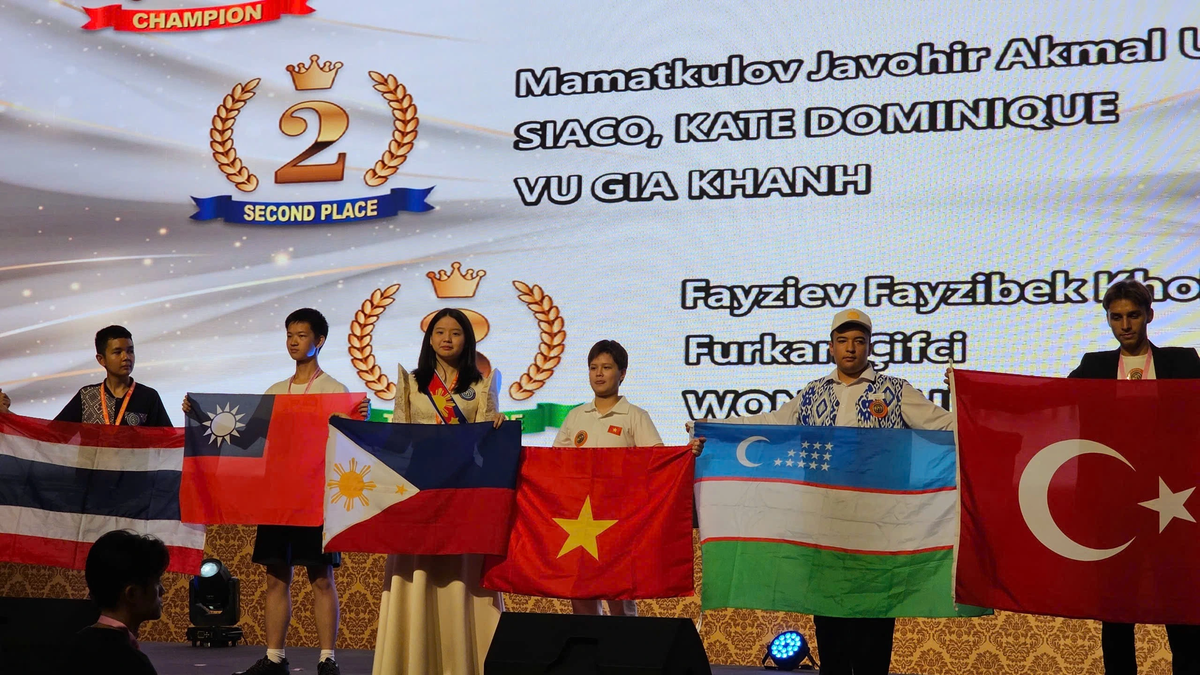






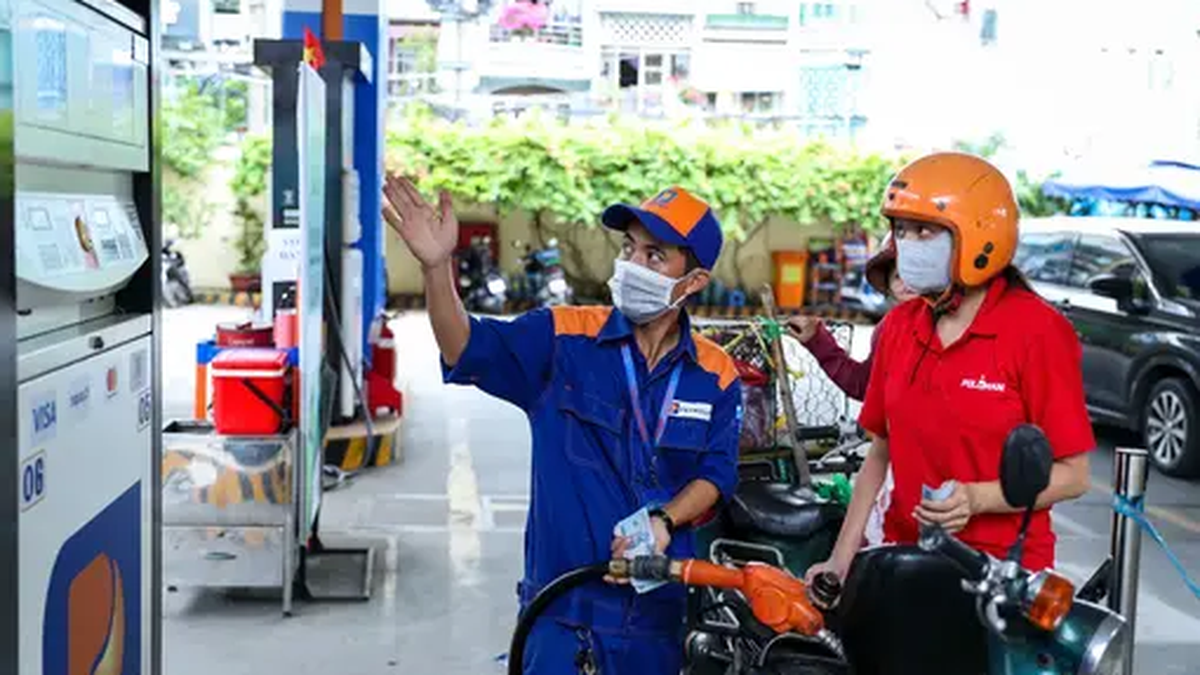
















![[Photo] National Assembly Chairman attends the seminar "Building and operating an international financial center and recommendations for Vietnam"](https://vphoto.vietnam.vn/thumb/1200x675/vietnam/resource/IMAGE/2025/7/28/76393436936e457db31ec84433289f72)



























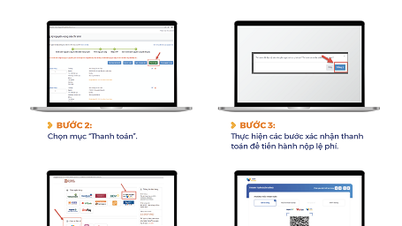




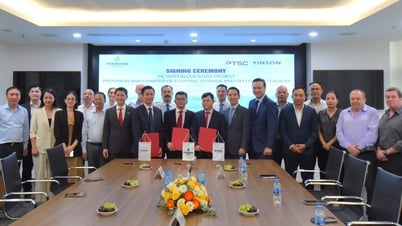






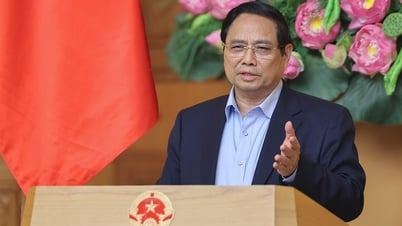


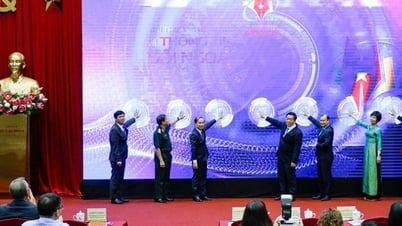



























Comment (0)